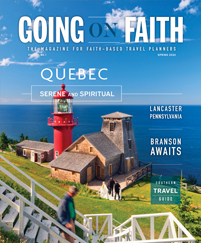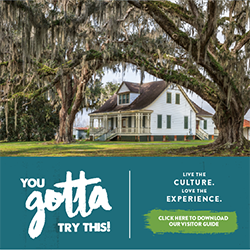Mississippi Civil Rights Museum
Jackson, Mississippi
The Mississippi Civil Rights Museum opened in December in Jackson, Mississippi, and “the reception has been absolutely phenomenal,” said museum director Pamela D.C. Junior.
The museum’s eight galleries focus on the years 1945 to 1976, when Mississippi was on the front lines of the civil rights movement.
Introductory galleries explore Mississippi slaves’ struggle for freedom and, as freed citizens, their efforts to establish strong communities. From there, visitors step into the central rotunda, where the dramatic soaring sculpture “This Little Light of Mine” changes color as visitors hear recordings of songs that were sung during the civil rights movement.
In Gallery Four, people learn how the end of World War II helped spark the civil rights movement because black veterans “got better treatment being overseas than they did when they came home,” Junior said. In the “Separate but Not Equal” exhibit, a schoolroom split down the middle shows the inequities in education: nice desks for white students, wooden benches for black students. Around the corner, Oprah Winfrey narrates the story of Emmett Till’s brutal and senseless lynching in 1955, and the doors of Bryant Grocery are on display.
Visitors also learn about Freedom Riders; voting rights activist Fannie Lou Hamer, who led Mississippi’s Freedom Summer; and the Black Empowerment movement. Throughout the museum, guests will find small theaters playing films that tie into each exhibit. In the final gallery, guests can leave quotes and answer questions about what they can do in their own communities.
Birmingham Civil Rights Institute
Birmingham, Alabama
Many visitors to the Birmingham Civil Rights Institute in Birmingham, Alabama, come not only seeking understanding of the lessons of the civil rights movement but also “seeking relevance of what’s going on in the contemporary context,” said president and CEO Andrea Taylor.
“Even though we’ve made progress, we still see there’s a lot of work to do,” she said.
The institute sits across the street from both Kelly Ingram Park, which served as a large-scale staging ground for civil rights protests and demonstrations, and the 16th Street Baptist Church, which the Ku Klux Klan bombed in September 1963; that attack killed four girls.
The institute’s five galleries address the broader story of the civil rights movement, but the detail centers on what happened in Birmingham. The permanent exhibit includes the doors and bars of the Birmingham jail cell where King wrote his famous “Letter From a Birmingham Jail,” as well as a replica of the Freedom Rider bus that was bombed in the nearby city of Anniston and a KKK robe.
The 16th Street Baptist Church exhibit includes rubble from the church and pieces of stained-glass windows. The historic 1911 church, which is across the street, is also open for guided tours, which are available Tuesdays through Fridays and by appointment on Saturdays. Groups should schedule tours in advance.









